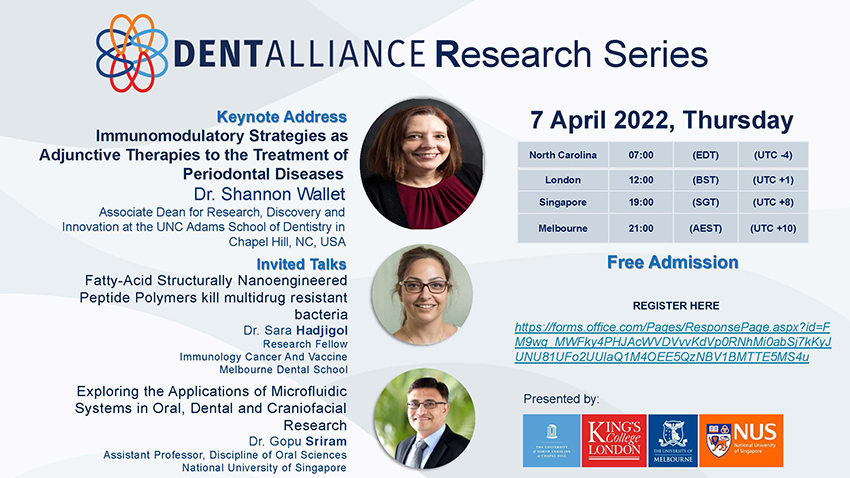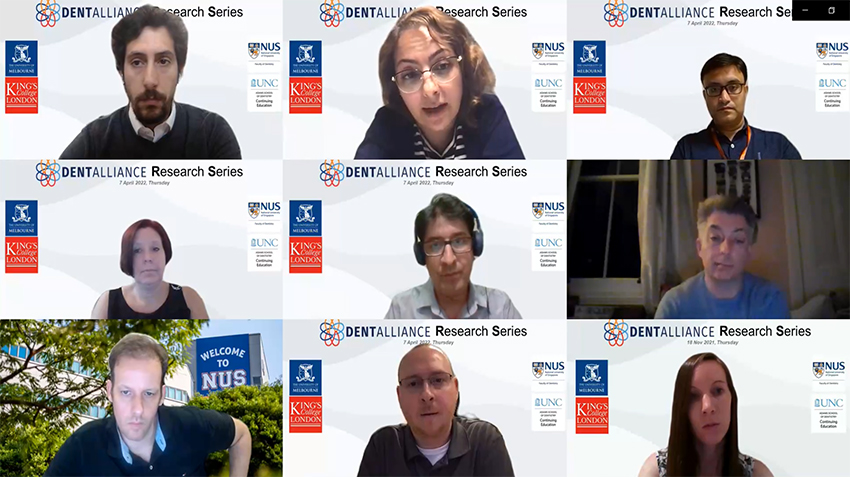Past Events

Past Events
2nd DentAlliance Research Series - 7 April 2022

The 2nd DentAlliance Research Series was held on 7th April 2022. A follow-up to the successful inaugural DentAlliance Research Series, this session saw researchers of the 4 partnering Universities of DentAlliance coming together once again to share more about their areas of research.
The event kicked off with keynote speaker, Professor Shannon Wallet, Associate Dean for Research, Discovery and Innovation at the UNC Adams School of Dentistry presenting her research on immunomodulatory strategies as adjunctive therapies to the treatment of periodontal diseases. Her research concluded that local immunomodulation is effective, with local administration inhibiting alveolar bone loss and diminishing mucosal proinflammatory milieu. Therapeutic administration can also suppress inflammation and promote homeostasis as well, with immunomodulatory properties being independent of bacterial load.
The two early-career invited speakers, Dr. Sara Hadjigol, Research Fellow at the Melbourne Dental School, and our very own Assistant Professor Gopu Sriram of the NUS Faculty of Dentistry also shared their on-going research.
Dr. Hadjogol shared her research on fatty-acid Structurally Nanoengineered Peptide Polymers (SNAPP) being used to kill multidrug resistant bacteria. Using fatty acid to modify SNAPPs, her research has shown that these modified SNAPPs are more effective and faster in killing certain types of resistant bacteria (such as S. aureus). Furthermore, the modification using fatty acids and lipids does not increase the cytotoxicity of SNAPPS, allowing it to remain safe.
Dr. Sriram wrapped up the session with his presentation on the possible applications of microfluidic systems in oral, dental and craniofacial research. He shared on the development of microfluidics and organ-on-chip technology, as well as their applications. These include the recapitulation of unique features not possible with traditional methods, providing deeper understanding of tissue responses under flow conditions, and customisation and personalisation of features for different research areas and questions. This technology has also allowed for greater collaborations between researchers in the fields of additive manufacturing, biofabrication and non-invasive imaging.



